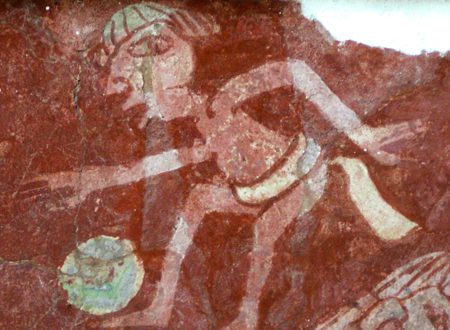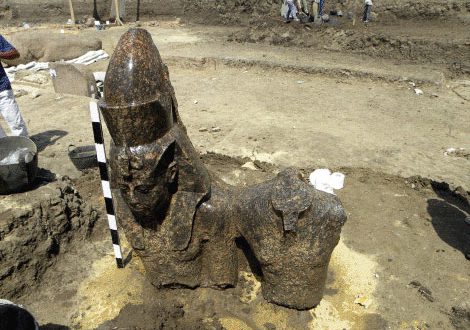 Archaeologist working on Stone Age remains at a site in North Yorkshire say it contains Britain’s earliest surviving house. It dates to at least 8,500BC when Britain was part of continental Europe.
Archaeologist working on Stone Age remains at a site in North Yorkshire say it contains Britain’s earliest surviving house. It dates to at least 8,500BC when Britain was part of continental Europe.
The team from the Universities of Manchester and York unearthed the 3.5 metres circular structure next to an ancient lake at Star Carr, near Scarborough.
The 10,500-year-old house, which was first excavated by the team two years ago, was comparable to an Iron Age roundhouse. It had post holes around a central hollow which would have been filled with organic matter such as reeds, and possibly a fireplace.It predates what was previously Britain’s oldest known dwelling at Howick, Northumberland, by at least 500 years.
“This is a sensational discovery and tells us so much about the people who lived at this time, said Dr Nicky Milner from the University of York. “From this excavation, we gain a vivid picture of how these people lived. For example, it looks like the house may have been rebuilt at various stages.
Dr Chantal Conneller and Barry Taylor from The University of Manchester with Dr Nicky Milner from the University of York have been working at Star Carr since 2004.
To an inexperienced eye, the areamight lookunremarkable – just a series of little rises in the landscape, but the archaeologists say the ancient lake is a hugely important archaeological landscape many miles across, comparable even to Stonehenge.
The peaty nature of the landscape has enabled the preservation of many treasures including the paddle of a boat, the tips of arrows and red deer skull tops which were worn as masks, explain Taylor.
 Remains of abirchtreehave also been excavated.Despite being 11,000 years old, the large trunk is well preserved with its bark still intact.
Remains of abirchtreehave also been excavated.Despite being 11,000 years old, the large trunk is well preserved with its bark still intact.
It is likely there was more than one house at Star Carr.
The researchers are currently excavating a large wooden platform next to Lake Pickering, which is possibly the earliest evidence of carpentry in Europe.
The platform is made of hewn and split timbers; the earliest evidence of this type of carpentry in Europe. And the artefacts of antler, particularly the antler head-dresses, are intriguing as they suggest ritual activities, said Dr Milner.
The team hopes the new excavation will tell them more about the state of preservation the Star Carr remains are in. The peat is drying out, so it’s a race against time to continue the work before the archaeological finds decay, says Taylor.
The site was inhabited by hunter-gatherers from just after the last ice age, for a period of between 200 and 500 years. According to the team, they migrated from an area now under the North Sea, hunting animals such asdeer, wild boar, elk and enormous wild cattle known as auroch. Though they did not cultivate the land, the inhabitants did burn part of the landscape to encourage animals to eat shoots and kept domesticated dogs.
“This changes our ideas of the lives of the first settlers to move back into Britain after the end of the last Ice Age,
Dr Conneller said.
“We used to think they moved around a lot and left little evidence. Now we know they built large structures and were very attached to particular places in the landscape.”



